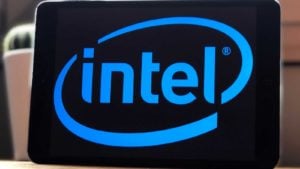In the stock market, identifying promising investment opportunities is a pursuit that demands attention to detail and solid foresight. This article delves into the intricacies of seven stocks, each representing a unique sector with immense growth potential.
These stocks are poised for explosive growth, from their first entry into the foundry business to their fourth success in pharmaceuticals.
Whereas the second one’s dominance in the global money movement and the seventh’s digital transformation exemplify how finance is evolving. Meanwhile, the third one’s sustainable practices in agriculture, the fifth one’s strategic diversification in tobacco, and the sixth one’s robust defense systems contribute to their compelling narratives.
Read more to unravel these companies’ key growth drivers, partnerships, and strategic initiatives. Learn about these million-dollar opportunities before the stocks soar.
Intel (INTC)

Intel’s (NASDAQ:INTC) lead into the foundry business is a considerable strategic move, enhancing the company’s growth potential.
The Intel Foundry Services signifies the company’s long-term vision to become the second-largest external foundry by 2030. This move expands Intel’s reach beyond traditional semiconductor manufacturing and positions it at the edge in providing foundry services.
Specifically, IFS is gaining traction in the market, with over 40 strategic agreements across various domains (Q4 2023).
Furthermore, the expansion of the Foundry ecosystem is in rapid progress with programs like RAMP-C. The collaboration with United Microelectronics to develop a 12-nanometer process platform targeting high-growth markets further strengthens Intel’s foundry capabilities.
Finally, the advanced packaging business, with three additional design wins in Q4 and a total deal value for IFS exceeding $10 billion, suggests the attractiveness of Intel’s offerings in the foundry space. T
he strategic move to open Fab 9 in New Mexico to support 3D advanced packaging manufacturing is in response to the growing demand in this segment. Hence, this is contributing to Intel’s revenue and value growth potential.
Visa (V)

To begin with, the growth of total transactions for Visa (NYSE:V) Direct by 20% (Q1 2024) is a key factor for value growth.
This shows the increasing adoption and utilization of Visa’s money movement solutions. To the point, Visa Direct offers instantaneous, secure, and easy transactions, and the growth reflects its relevance among Visa’s consumers.
Additionally, the growth of P2P cross-border transactions by over 65% year-over-year signifies Visa’s lead in enabling global money movement.
This suggests the increasing demand for cross-border P2P transactions and Visa’s edge in capturing a considerable market share, the growth highlights an increase in transaction volume. Also, it is indicative of Visa’s efforts to enhance its cross-border payment solutions.
Finally, these metrics suggest the company’s focus on providing users with efficient cross-border money transfer services. Thus, this contributes to Visa’s competitive edge in global payments processing.
Archer Daniels Midland (ADM)

Archer Daniels Midland’s (NYSE:ADM) strategic partnerships and initiatives boost the company’s rapid value growth potential.
These initiatives include targets such as 4 million regenerative acres by 2025 and 75 million gallons of renewable green diesel production annually.
These targets suggest Archer Daniels Midland’s moves on sustainable practices and renewable energy.
The partnerships with major players like PepsiCo (NASDAQ:PEP), Nestle (OTCMKTS:NSRGY), and Carlsberg (OTCMKTS:CABGY) may contribute to Archer Daniels Midland’s growth momentum. Also, the collaborations with industry giants enhance Archer Daniels Midland’s moat. Also, this creates opportunities for mutually beneficial maneuvers.
Planned recurring cost savings from automation are nearing $20 million annually by 2024, focusing on operational efficiency. Automation supports Archer Daniels Midland to streamline operations, reduce costs, and boost productivity.
Finally, Archer Daniels Midland’s trailing four-quarter average adjusted return on invested capital of 13.2% (Q3 2023) signifies the company’s efficient use of capital to generate profits.
Therefore, a high ROIC indicates that Archer Daniels Midland is making effective investments that generate returns above the cost of capital.
Pfizer (PFE)

The Vyndaqel and Prevnar product families’ growth is one of the vital fundamental growth drivers for Pfizer (NYSE:PFE). The company had a solid 47% operational growth globally in the Vyndaqel product family, including Vyndaqel, Vyndamax, and Vynmac.
This growth was based on the continued strong uptake of the transthyretin amyloid cardiomyopathy indication, particularly in the US and developed Europe. Despite the growth, a large unmet demand remains because of the need for a more general understanding and diagnostic capabilities for this life-threatening disease.
Additionally, the Prevnar family of products, Prevnar 13 and Prevnar 20, witnessed a global 15% year-over-year operational revenue rise (Q3 2023).
Strong patient demand for Prevnar 20 Adult in the US, the approval of Prevnar 20 Pediatric in the US, and the growth of Prevenar 13 Pediatric in emerging markets lead to this increase. Interestingly, Prevnar 20 Adult maintained a 95% market share in the US during the third quarter.
Finally, these developments provide an ideal growth basis for Pfizer’s topline and market value.
Altria (MO)

Altria’s (NYSE:MO) focus on the oral tobacco and nicotine pouch categories shows strategic diversification beyond traditional tobacco products.
Altria acknowledges the sizable growth in the nicotine pouch category, with a nearly 10% year-over-year increase (Q3 2023) in full nicotine pouches.
This increase aligns with market trends. The On! brand’s performance includes a 33% sequential increase in retail prices and a 52% year-over-year increase. This demonstrates effective pricing strategies and consumer acceptance.
Additionally, the focus on improving profitability while growing market share is evident in the 7.1% growth in adjusted operating company income for the oral tobacco products segment during Q3.
Internationally, the launch of On! with positive consumer feedback in Sweden, PLUS suggests Altria’s focus on exploring new markets and catering to global consumer preferences.
Finally, the trends suggest progressive market leads, expansion, and evolving consumer engagement. This approach may continue to sustain growth in the oral tobacco and nicotine pouch categories, boosting the stock’s valuation over the long term.
Boeing (BA)
![Royal Air Force Boeing (BA) Chinook HC2A (352) [ZH895] lifting off from runway](https://investorplace.com/wp-content/uploads/2022/03/boeing_ba_ch47_1600-300x169.png)
Boeing (NYSE:BA) Boeing Defense Systems (BDS) operates in the defense and space sectors. There is a boost in operating performance within BDS.
Despite the higher estimated costs of the VC-25B program, Boeing asserts that these factors will maintain the performance and capability of the end product.
Boeing focuses on recovering and normalizing BDS margin performance by 2025 and 2026. There are vital milestones within BDS, such as the delivery of the first T-7A to the US Air Force and the award from the US Army for 21 Apache helicopters.
These attainments boost confidence in BDS despite a slower recovery than desired. To this point, the backlog at BDS stands at $58 billion, with a major portion outside the United States. Hence, this signifies the global vitality of Boeing’s defense products.
In this context, Boeing outlines a three-tiered portfolio strategy for BDS, categorizing products based on their performance and prospects. The first tier represents a solid core business with products performing in the mid-to-high-single-digit margin range.
The second tier includes specific fighter and satellite programs that negatively impact margins. Finally, the third tier comprises large fixed-priced development programs focusing on maturing and retiring associated risks.
Therefore, coupled with strong demand, these developments frame a positive outlook for the business’s value.
Western Union (WU)

Western Union’s (NYSE:WU) digital business growth may lead to a rapid boost in market capitalization.
Specifically, Western Union’s focus on digital transformation has resulted in a positive growth in its digital business. In Q3 2023, the global branded digital business achieved 3% revenue growth, a quarter ahead of the previous target.
The sustained growth in transactions at 12% and the alignment of revenue growth with transaction growth suggest the leads of the company’s digital strategy.
Fundamentally, the accelerated growth in Western Union’s digital business is a pivotal aspect of its overall growth strategy. Achieving revenue growth early signifies effective implementation of the company’s go-to-market program. The sustained growth in digital transactions indicates an increasing preference for digital financial services.
Finally, the company’s new go-to-market strategy has accelerated new customer acquisition, considerably reducing customer acquisition cost.
The branded digital business achieved positive revenue growth with a CAC decline of over 20% year-to-date since efficiencies in the marketing program largely drive this. Hence, Western Union’s focus on customer acquisition and cost efficiency may lead to value growth.
As of this writing, Yiannis Zourmpanos held long positions in INTC and PFE. The opinions expressed in this article are those of the writer, subject to the InvestorPlace.com Publishing Guidelines.
